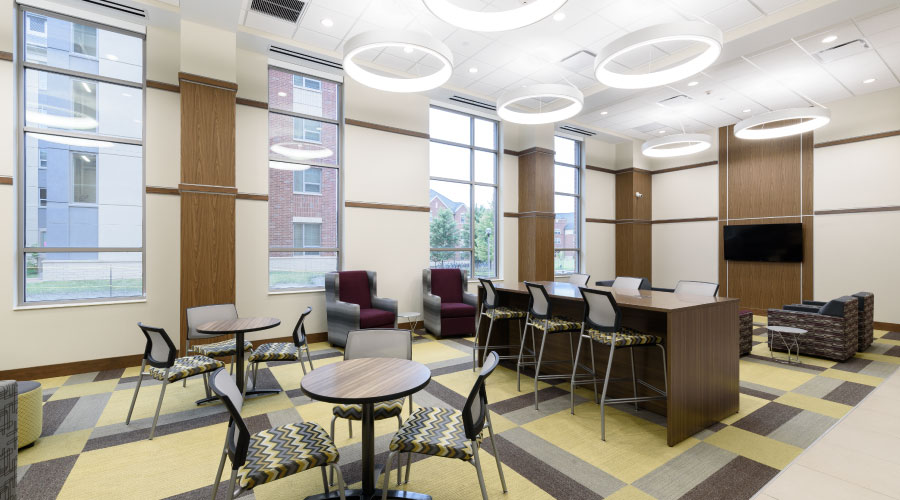Multiple Types Of Lighting Can Complicate Daylighting Efforts
When it comes to daylighting, multiple types of lighting can make it more difficult, says Richman. LEDs use drivers, whereas fluorescents and metal halides use ballasts. So to dim the lights, you'll need dimmable drivers for LEDs, dimmable ballasts for fluorescents, dimmable HID ballasts — if possible — and so on.
Then, says Richman, you have to "look at those drivers and ballasts and make sure that there's some kind of controller that has the right signal for all of those that you could run off of one control scheme that might be tied to your daylight sensors."
If there's not a centralized controller that can control all of those lights, then there may be photo sensors or other more zone-specific options to help manage daylighting efforts. But if you're switching a space that is currently lit by fluorescents to LEDs, keep in mind that LEDs radiate light 180 degrees, while fluorescents radiate light 360 degrees, says Arnold.
"It's a very different light source, and LED light fixtures can have very different distributions from fluorescents or whatever incumbent lighting system you're replacing," he says. So, if you install LEDs — regardless of whether the area is taking advantage of daylighting or not — you're probably going to have to recommission your system to account for the different light distribution.
Also driving energy efficiency are energy codes that are setting higher baselines of efficiency with each new version. Regardless of which energy code your local or state building code uses, it's not going to start demanding less energy efficiency, so putting in an efficient control strategy now helps make adjustments down the line easier. The code won't require you to relamp or add controls to an existing space, but when you build new space or renovate or retrofit that existing space, you'll have to meet the requirements.
To keep ahead of the requirements, Richman suggests talking to your local or state building department about what they expect to be in the next version of the code. They may not know exactly, but they can usually make an educated guess; also, there's usually a grace period, so you can plan a little in advance. Keep in mind that if you're doing a project in stages over a long period of time, the codes may change as you're in the middle of the project.
"If you're doing a retrofit in the northeast corner this year and you're going to do the other corner next year, you'll want to think about that ahead of time, and try to anticipate what the energy codes will be as well," Richman says.
Energy savings are not necessarily the reason behind individual lighting controls, but can be a nice secondary benefit. Giving individual users the ability to change light levels can cut down on complaints and even save energy, because numerous studies have shown that users with individual control actually set the light levels lower than they would otherwise be.
To get the most out of individual controls, don't just say, "here's your lighting control," and walk away, says Fong. Training occupants can make a big difference in acceptance and usage of individual controls.
"If you think about it," she says, "we train people on how to use the phone at their desk, how to use their computer, how to use their cell phone in conjunction with whatever software the company is using, so why not train people to use the lights?"
Related Topics:













